In today's series of tests I used an ATTiny85 that would turn on an LED when a INT0 pin change interrupt occurred. BBs were the test projectile used.
First prototype version: Two pieces of aluminum foil with a piece of cardboard as both an insulator and to hold the thing up. I didn't expect this to work too well due to the thickness of the cardboard. And as the test clip shows, it didn't.
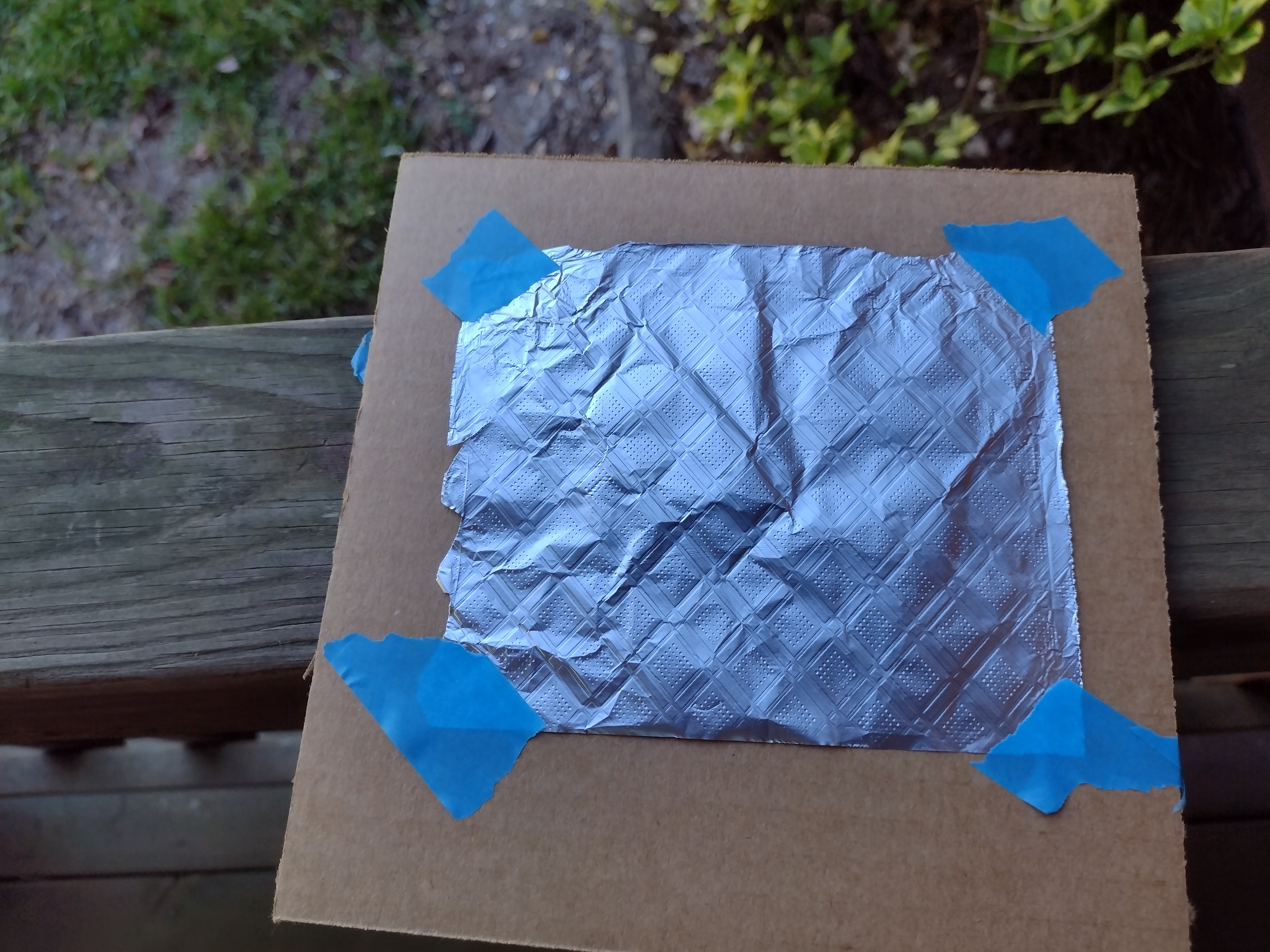
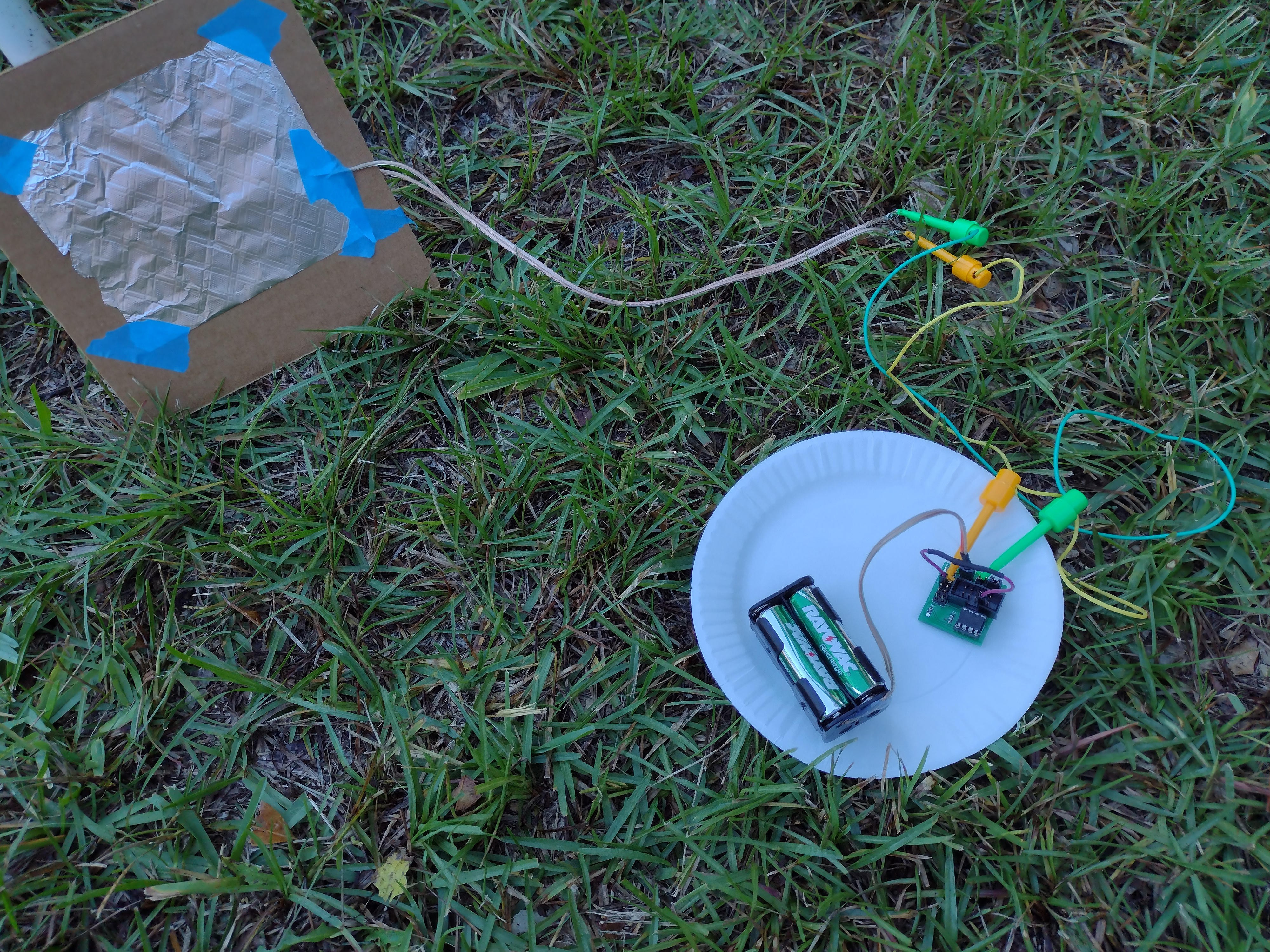
I then added another layer of foil to the front and back. This kinda worked, but not very well:
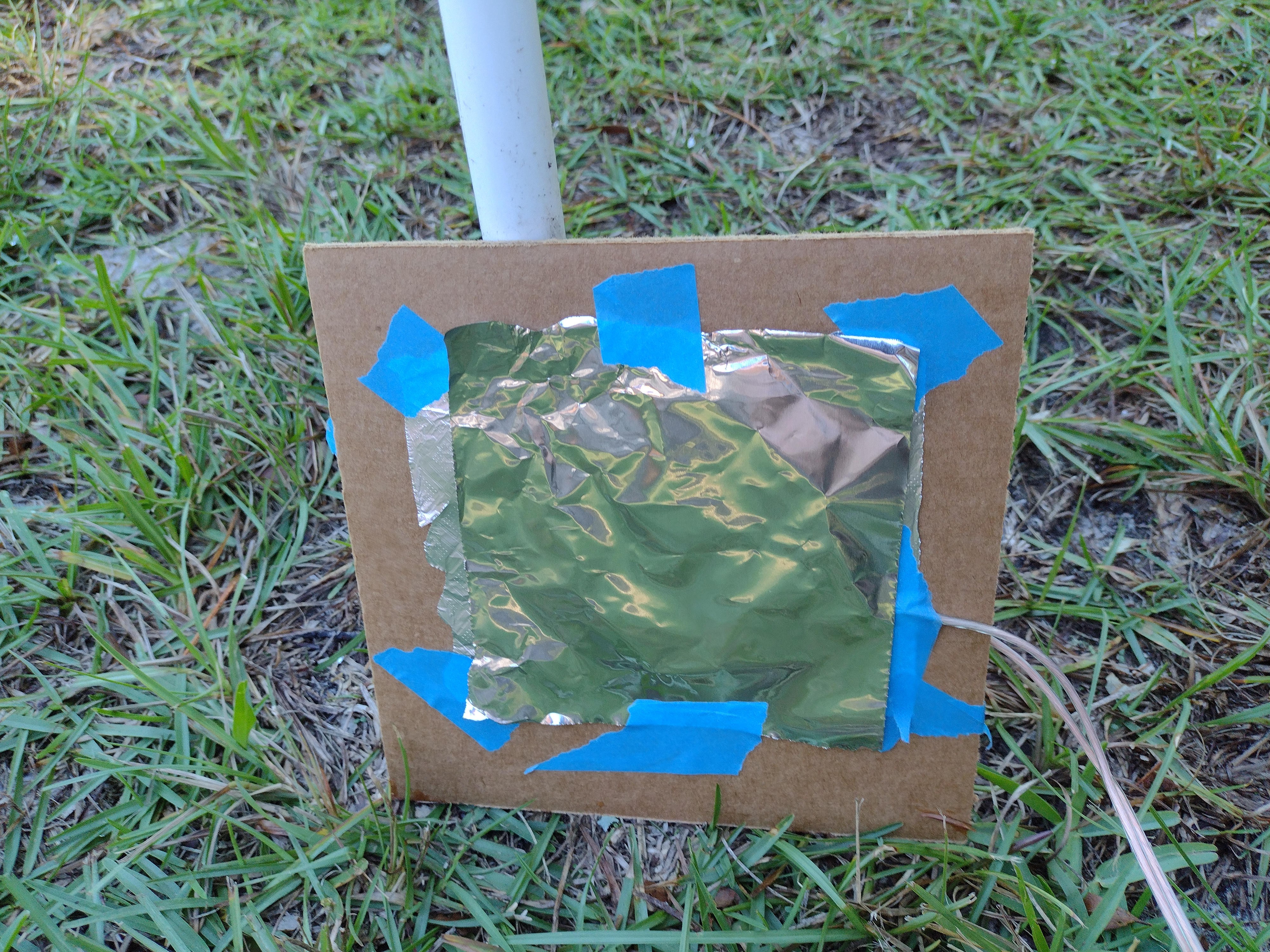
I decided then outright eliminate using the cardboard piece as the insulating layer and decided to go with something much thinner, parchment paper. The cardboard now just served as a support.
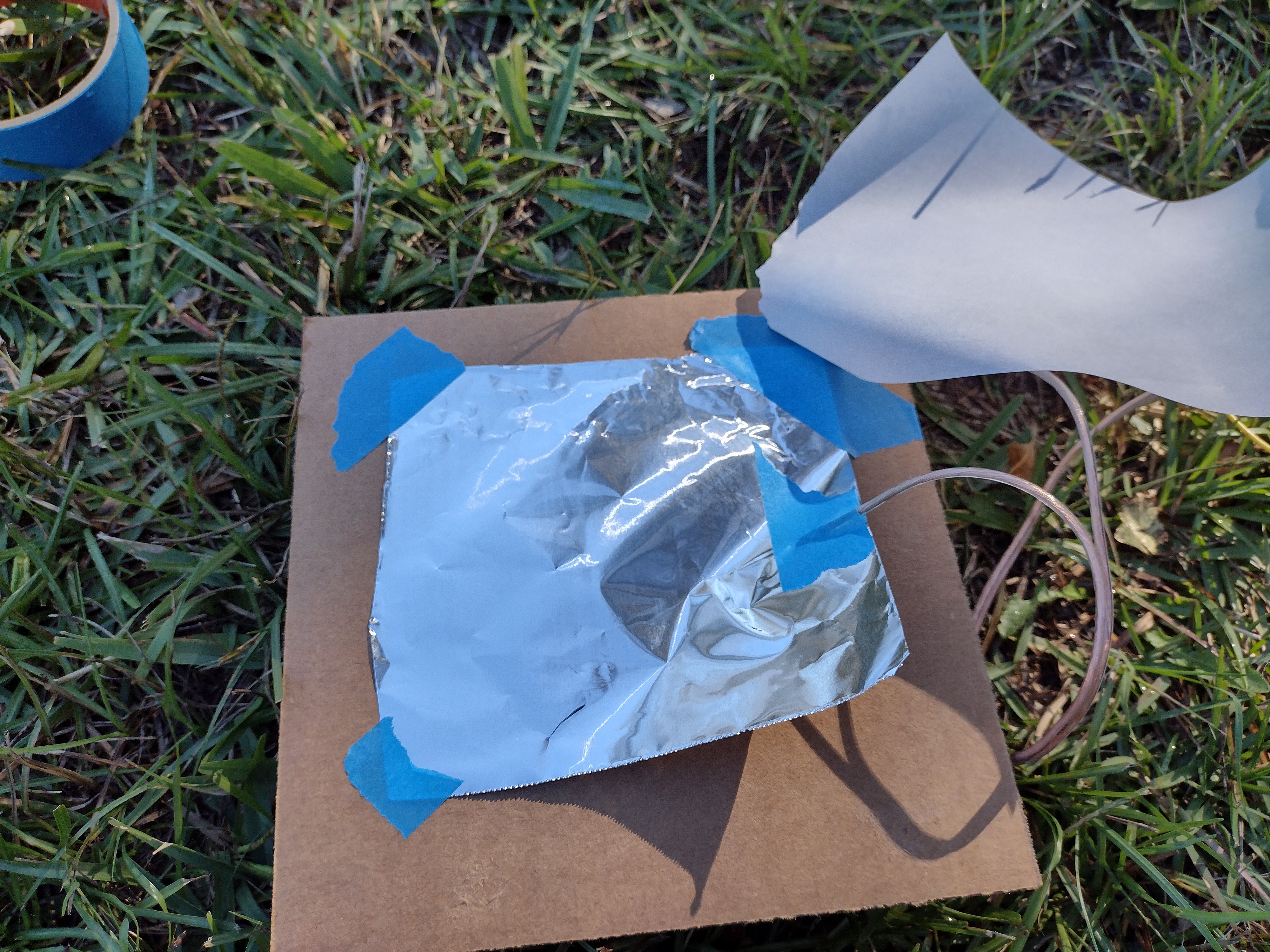
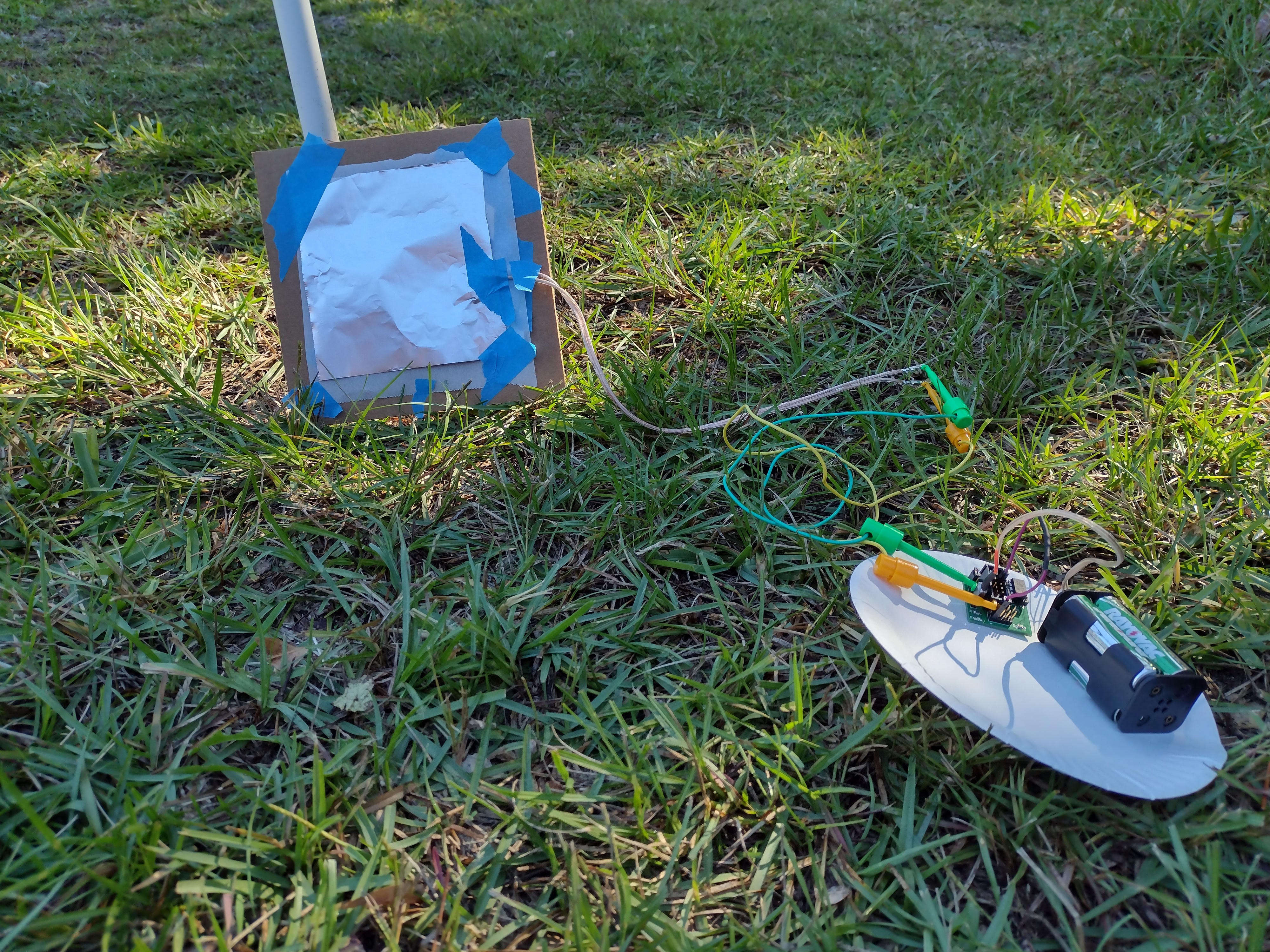
Things worked much better:
A side effect of using such a thin material for the insulator was the two conductive layers would sometimes make a persistent direct contact after firing a projectile though the target. Perhaps adding another layer or two of parchment paper would help mitigate this issue.
It would be interesting to see if there would be any differences if a projectile was going at a much higher speed, say one fired from an actual firearm. I could try borrowing one from a friend, but there is the issue of where I could conduct testing. I'd rather not get unwanted attention from the local police for firing a gun in my backyard. If anyone knows of something that can fire at a considerably higher speed than a typical BB gun that's not an actual firearm, please do comment .
Discussions
Become a Hackaday.io Member
Create an account to leave a comment. Already have an account? Log In.
i built a similar device several years ago. The issue is that tinfoil deforms when hit, but if you want the system to function it needs to reset to it's initial state each time. My solution was to coat a piece of foil with clear tape (I used wide 2" tape). This was applied by laying the foil out flat and then applying parallel strips of tape until it was covered.
So the entire stack was:
- a backing plate of 1mm steel
- a piece of normal printer paper with a cutout
- tinfoil with tape on the outside.
This worked well for picking up finger taps (I was building a drum machine) on target pads of about 10cm square.
For a firearm, I suspect the tinfoil (even if reinforced with tape) would shred. Replacing it with thicker metal (eg 0.25mm sheet) may help.
The other method of doing target hit detection is to use a piezo sensor coupled to a rigid plate and using software to look for impacts. This would potentially allow a super solid target plate to be used - which could be chosen to definitely survive a firearm impact.
Are you sure? yes | no